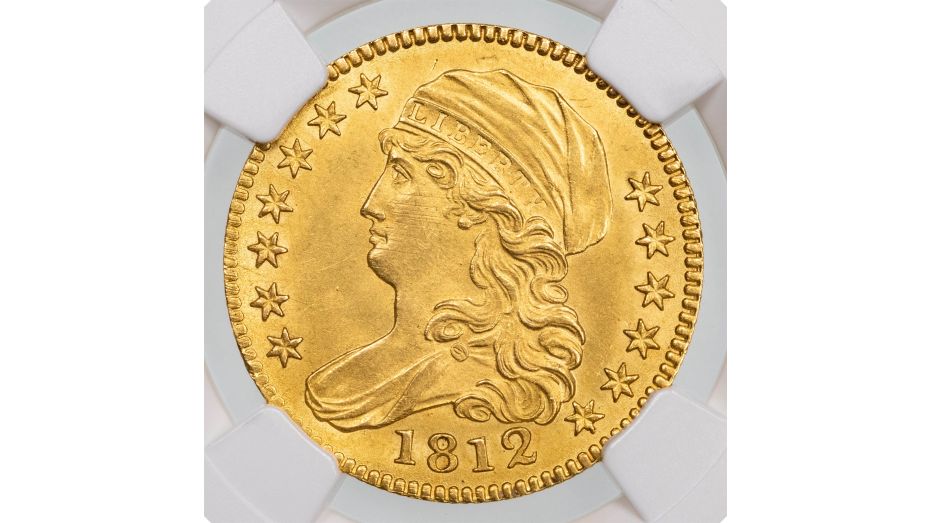The Impact of the Assistant Engraver: The Unsung Designs of John Reich
The rich tradition of Mint artists designing American coinage can be traced back to one assistant engraver who set the standard for displaying the denomination on coinage: John Reich. His design was used on one of the earliest half dollars as well as the first gold coin struck by the US Mint.
Born in Germany to a medal making family, John Reich emigrated to America in 1800. Reich worked under a coppsersmith for a year before his talent was discovered by Henry Voigt, a chief coiner at the Mint. His first notable work was the 1801 Jefferson Presidential and Indian Peace medal, which Charles E. Barber would use as a basis for the 1903 Louisiana Purchase Exposition gold dollar.
It wasn’t until 1807 that Reich would make his next big leap at the US Mint, when Mint Director Robert Patterson wrote to President Jefferson. Patterson was concerned about the age and health of then chief engraver Robert Scot. He wrote:
“Our present engraver, [Robert] Scot, though indeed a meritorious and faithful officer, is yet so far advanced in life, that he cannot very long be expected to continue his labors. In the event of his sickness or death, the business of the Institution would probably be stopped for some time, since few, if any one could be found qualified to supply his place except Mr. Reich, an artist with whose talents, I presume, you are not unacquainted. And, in truth, the beauty of our coins would be greatly improved by the assistance of his masterly hand.”
Once Reich was employed by the US Mint, Patterson once again wrote to President Jefferson, noting how more designs could be produced and improved with the careful artistry of their new assisant engraver. Patterson wrote:
“[Reich] has covenanted to execute any work in the line of his profession that may be required of him either by the director or chief engraver, whether for the immediate use of the Mint, or for that of the United States, when ordered by any special resolution or Act of Congress for that purpose, or by the President, provided that in the execution of any such work, no extraordinary hours of labor or attendance be required without an adequate compensation therefor, so that if any seals should be wanted for the public offices, or dies for the purpose of striking Indian or other medals, they can now be executed in the best style at the Mint, without any extra expense to the government.”
In Reich’s first year at the US Mint, he designed the Capped Bust Half Dollar. Displayed from 1807 to 1836, the reverse of the design included “50 C.” to indicate that the coin’s denomination is 50 cents of one dollar. A similar design was used on the Half Eagle from 1807 to 1812, known as the Draped Bust to Left with the reverse showcasing “5 D.” meaning it was valued at 5 dollars.
After 10 years of working at the US Mint, Reich retired to Albany, New York where he lived until 1833. While his time at the US Mint was short, his designs are among the most collected and cherished by numismatists worldwide.






